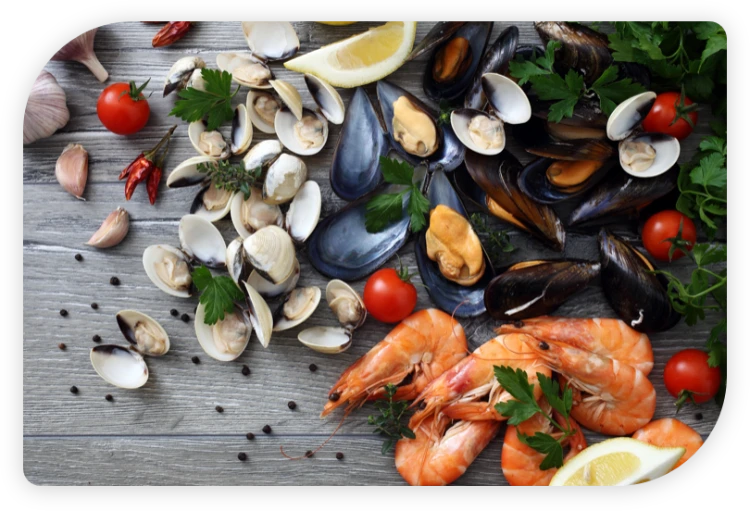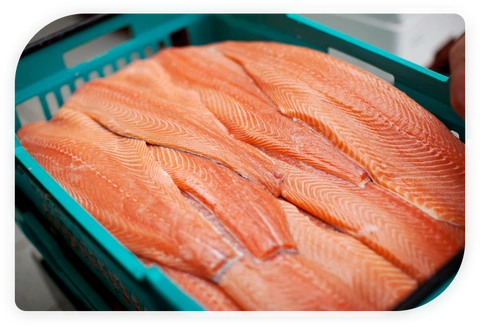Using Ozone in a Seafood Processing Plant
A more effective preservative: Ozone
Fish and seafood processing plants have traditionally used large quantities of chlorine in aqueous solutions to preserve the product. The method involves submerging or directly spraying the fish or seafood with the solution.
Chlorine use in the preservation and processing of seafood is however an ineffective method of controlling bacterial growth, which results in poor shelf life of seafood. Bacteria is responsible for food spoilage, and without a proper way to control their growth, they can seriously limit the shelf life and consequently the shipping radius, storage in transit and export of the affected product.

Ozone for Seafood Processing and Sushi Restaurants
More Effective Than Chlorine
Ozone is a universal disinfectant that can be used to safely control microbes, bacteria, and viruses commonly found in seafood and fish products. The use of ozone can improve food safety, food quality, odour, and increase shelf life. Ozone technology for seafood processing in the food industry has been used for more than 20 years, is extremely safe, and is more effective than chlorine.
Here at Integra Water, we are proud to offer a wide range of water treatment solutions, including ozone for the food industry. Whether you’re in the fish or seafood industry and are looking for safe, strong, and effective disinfectants, call us today to get all of your sanitizations needs under control for your business. Below are just a few of the man different uses clients might use ozone in the seafood industry:
- Direct Food Contact
- Seafood Storage Sanitization
- Ice Machines
- Sanitization of Equipment & Utensils
- Surface Sanitation
- Seafood Transportation Sanitization

Ozone Applications in a Seafood Processing Plant
Ozone can be used in a seafood processing plant for a variety of reasons including ozone ice and fish preservation. It can also lead to less bacteria that results in a longer shelf-life. As a potent oxidant, aqueous ozone causes a reaction called oxidative burst that perforates the cell wall of bacteria causing them to die. Ozonized water is therefore an extremely effective means of reducing and eliminating bacterial pathogens in maricultural facilities and extending the shelf life of marine food products.
FAQs
Regarding water treatment, ozone is a method that is used to reduce contaminates. Ozone is an oxidant, meaning it reacts with and accepts the electrons of other substances. Ozone is added to the water and immediately starts oxidizing. This eliminates contaminants such as bacteria, viruses, and metals.
If you run a seafood processing plant and are interested in using an ozone water treatment, contact our team.
For years, the food processing industry has been shifting towards using more organic methods at every stage. Traditionally, chlorine has been used for preservation and processing but is ineffective when it comes to controlling bacterial growth and shelf life. Other traditional methods used in food processing have been found to leave residual chemicals and foul smells and flavours.
Interested in switching to ozone water treatment for your seafood processing plants? Contact our team at Integra Water to get started.
There are several advantages to using ozone water treatment in your seafood processing plant. Using this method of water treatment can lead to longer shelf life for the products since it eliminates bacteria that cause food spoilage.
Work with our experienced water treatment specialists at Integra Water, contact our team today.
Ozone can be used for a variety of applications in a seafood processing plant. For instance, it can be used for ozone ice, fish preservation, rinses, washers, machine feeds, and more. As a disinfectant, ozone can effectively reduce the presence of a variety of microorganisms and water-born contaminants.
To get started on implementing an ozone water treatment system at your seafood processing plant, contact our team at Integra Water.
See How Integra Can Help!
See What Our Water Solutions Clients Are Saying
Get In Touch

Contact Info
